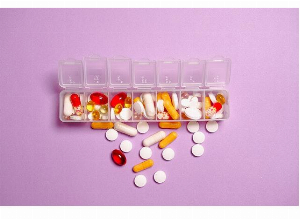Everything you need to know about andropause, the "male menopause"!
Published Jan 2, 2023 • By Candice Salomé
Andropause is the "male menopause". Also called "age-related androgen deficiency" or "ARAD", it is accompanied by a drop in testosterone linked to natural aging and many symptoms are associated with it.
But at what age does andropause occur? What are the symptoms it causes? How to better live this period?
We tell you everything in our article!

What is andropause?
Andropause is defined as the decline in testosterone production in men. It is also known as Age-Related Androgen Deficiency Disorder or ARAD.
Testosterone is a male hormone secreted by the adrenal glands in both women and men, but in greater quantities in men. Normal testosterone levels are associated with sexual performance, reproductive function, maintenance of muscle mass and proper hair growth.
The decline in testosterone is age-related and usually begins around the age of 40 or 45.
Andropause is defined without any other disease. It resembles menopause in women in terms of symptoms but reproduction is still possible.
Nevertheless, andropause is not systematic. The risk increases with age, particularly after 60 years. Its incidence is about 12 new cases per 10,000 people per year.
The symptoms of andropause are as follows:
- A decrease in libido,
- A decrease or even disappearance of so-called reflex erections (involuntary) at night and upon awakening,
- Erectile dysfunction,
- Significant sweating outside of any physical activity,
- Hot flashes,
- A loss of energy and increased fatigue,
- Sleep disorders,
- Mood disorders,
- A depressive tendency,
- A decrease in muscle mass,
- An increase in abdominal circumference,
- Bone fragility,
- Regression of hair growth and hair growth.
What are the causes of andropause?
Only 2% of testosterone circulates freely in the blood. In fact, this hormone is mainly bound to two plasma proteins: SHBG (strongly bound) and albumin (weakly bound).
The decrease in testosterone secretion is due to natural aging but also to the increase in the level of SHBG ("Sex hormone-binding globulin"). The increase in SHBG levels results in the removal of usable testosterone from the bloodstream. Thus, it greatly promotes andropause and its physiological manifestations.
The main cause of AAD is aging, but a poor lifestyle can predispose to this disorder. These include
- Overweight and obesity,
- A metabolic syndrome,
- Metabolic disorders such as diabetes, hypercholesterolemia...
- Liver disease,
- Chronic stress,
- Smoking,
- Excessive alcohol consumption,
- An unbalanced diet,
- A sedentary lifestyle,
- Taking certain medications such as antihypertensives, antiepileptics, antipsychotics, narcotics, corticoids...
- Regular use of narcotics.
Certain conditions such as cancer, HIV, lupus, mumps and organ failure can have a significant impact on testosterone decline.
Is it possible to fight andropause naturally?
Poor lifestyle habits can accelerate the decline of testosterone. By adopting a healthy lifestyle, it is possible to naturally preserve testosterone levels and reduce the symptoms of andropause.
Here are some recommendations:
Maintain a healthy weight
Increasing body mass index (BMI) can impact testosterone levels in a negative way. One study showed that being overweight is the most important risk factor for testosterone deficiency.
Reduce your alcohol intake
Male hormone production in the testicles and at the central level is affected by excessive alcohol consumption.
Alcohol reduces the level of luteinizing hormone (LH) in the blood. This is one of the main hormones that control the reproductive system. Produced in the pituitary gland, LH stimulates the production of testosterone.
Get enough sleep
It is well known that sleep is essential for the proper functioning of the body. Among other things, it helps maintain good testosterone levels. Research has shown that nights of less than 6 hours over the long term can cause testosterone levels to drop by nearly 15%.
Say goodbye to a sedentary lifestyle
Regular exercise has many health benefits, improving muscle strength and reducing the risk of disease. One study found that resistance training can increase testosterone levels.
Are there treatments for andropause?
The treatment of andropause is based solely on the administration of testosterone. There are several forms of testosterone: intra-muscular injections, tablets, transdermal gel, patches, etc.
Erectile insufficiency can be treated with a specific and complementary treatment (Sildenafil, Vardenafil or Tadalafil).
Treatment with testosterone requires a prostate check-up beforehand with, in particular, a PSA (prostate specific antigen) dosage and regular monitoring.
However, testosterone is contraindicated in cases of breast cancer or prostate cancer.
Did you like this article?
Click on "Like" or share your feelings and questions with the community in the comments below!
Take care of yourself!
Comments
You will also like

What are the dangers associated with the over-the-counter sale of certain medicines?
Dec 19, 2020 • 6 comments

 Facebook
Facebook Twitter
Twitter

